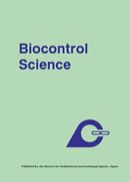Volume 7, Issue 3
Displaying 1-10 of 10 articles from this issue
- |<
- <
- 1
- >
- >|
-
2002Volume 7Issue 3 Pages 131-137
Published: November 20, 2002
Released on J-STAGE: June 28, 2010
Download PDF (4815K) -
2002Volume 7Issue 3 Pages 139-146
Published: November 20, 2002
Released on J-STAGE: June 28, 2010
Download PDF (1269K) -
2002Volume 7Issue 3 Pages 147-153
Published: November 20, 2002
Released on J-STAGE: June 28, 2010
Download PDF (2935K) -
2002Volume 7Issue 3 Pages 155-162
Published: November 20, 2002
Released on J-STAGE: June 28, 2010
Download PDF (1162K) -
2002Volume 7Issue 3 Pages 163-171
Published: November 20, 2002
Released on J-STAGE: June 28, 2010
Download PDF (1266K) -
2002Volume 7Issue 3 Pages 173-179
Published: November 20, 2002
Released on J-STAGE: June 28, 2010
Download PDF (938K) -
2002Volume 7Issue 3 Pages 181-185
Published: November 20, 2002
Released on J-STAGE: June 28, 2010
Download PDF (2316K) -
2002Volume 7Issue 3 Pages 187-191
Published: November 20, 2002
Released on J-STAGE: June 28, 2010
Download PDF (730K) -
2002Volume 7Issue 3 Pages 193-196
Published: November 20, 2002
Released on J-STAGE: June 28, 2010
Download PDF (3614K) -
2002Volume 7Issue 3 Pages 197-201
Published: November 20, 2002
Released on J-STAGE: June 28, 2010
Download PDF (634K)
- |<
- <
- 1
- >
- >|
